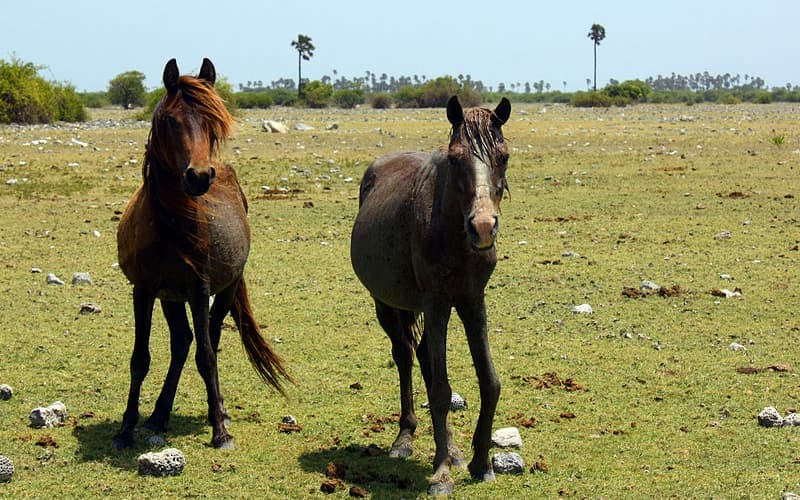Delft National Park, located in the northern province of Sri Lanka, is a unique destination that offers visitors a mix of nature and history. Spanning over 1,000 hectares, the park is home to a diverse array of flora and fauna and several historical sites.
Wildlife at Delft National Park
Delft National Park is home to several endemic species of wildlife, including spotted deer, wild boar, and Indian pangolin. Visitors can also spot several species of water birds such as flamingos, pelicans, and storks at the park’s lagoons.
The park is also a nesting ground for the endangered green sea turtle, and visitors can witness these majestic creatures coming ashore to lay their eggs on the park’s beaches.
Historical Sites at Delft National Park
The park is also home to several historical sites that date back to the colonial era. The most notable of these is the Dutch Fort, a 17th-century fortification built by the Dutch to protect their trading interests in the region. The fort’s ruins provide a glimpse into Sri Lanka’s colonial past.
Visitors can also explore several other historical sites within the park, including the Baobab Tree, which is said to have been planted by Arab traders over 1,000 years ago.
Activities at Delft National Park
Delft National Park offers several activities for visitors to enjoy. Visitors can explore the park’s diverse vegetation and spot wildlife on guided nature walks or cycling tours.
In addition, visitors can enjoy a swim in the park’s pristine beaches or take a boat ride to explore the park’s lagoons and mangroves.
Conservation Efforts at Delft National Park
Delft National Park is an important conservation area, as it serves as a refuge for several endangered species of wildlife. The park management is dedicated to preserving the park’s natural resources and promoting sustainable tourism.
The park’s staff also conducts research and monitoring programs to assess the health of the park’s ecosystem and develop strategies to protect it.
Conclusion
Delft National Park is a unique destination that offers visitors a mix of nature and history. Its diverse flora and fauna, pristine beaches, and historical sites make it an important asset to Sri Lanka’s natural and cultural heritage. Visitors can enjoy various activities while being mindful of the need to preserve and protect this precious natural and cultural resource for future generations.

